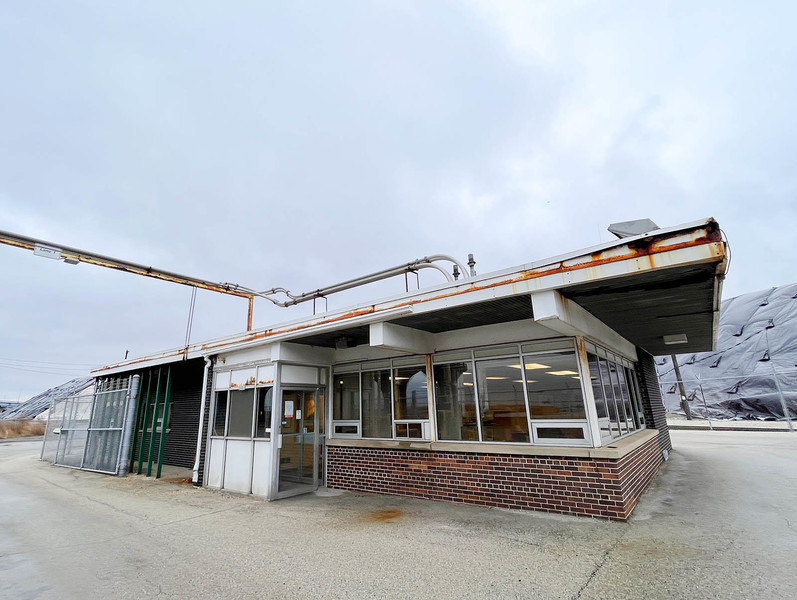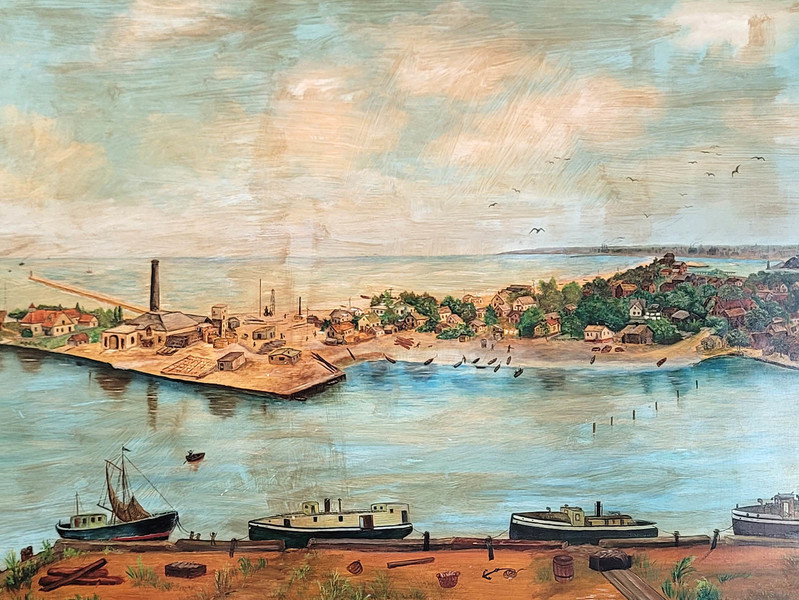There’s a moment in “People of the Port: A Jones Island Documentary,” a new Milwaukee PBS film written, co-produced and hosted by John Gurda Jones Island, when a still photograph of the island’s Kaszube settlement quite literally comes alive in a computer animation.
Suddenly, we’re walking through the makeshift winding, dead-ended “streets” on the island, as it teems with the life of a small fishing village, and Gurda’s words describing the scene really hit home.
The 30-minute documentary premieres Nov. 17 at 7 p.m. on Milwaukee PBS 10.1.
“It actually starts in Kaszube's Park, the smallest park in Milwaukee,” says Gurda, “but that was one of the sites for a time when Jones Island was the site of the largest Indian village in Milwaukee.
“The first time anybody mentioned Milwaukee by name, any white recorder, was back in 1679 when a French missionary priest named Zenobe Membre. He recorded a village at the river mouth, so that's the first chapter in Milwaukee’s history from a European perspective.”
While the Kaszube era, when the island was populated by Polish immigrants from that country’s Kashubia region – which as this documentary makes clear, had a peninsula that looked much like Jones Island – Gurda expands the picture and tells the story of the numerous ethnic iterations of the chameleon-like site.
“Start with the Native Americans,” he says, “then you go on to the French Canadians who traded with them in their village. You proceed to them being evicted back in 1838, and then 1853, James Monroe Jones comes from Buffalo and opens a shipyard on the western side of the peninsula. He’s blown away by both the financial panic and a storm, and in the 1870s, the Kaszubes come from the Baltic Sea coast of Poland and establish a commercial fishing village.
“They're evicted in the 1920s, with the last holdouts until the 1940s, and it becomes just transformed. The size is, through landfill, tripled or quadrupled, and you have the sewage treatment plant, and the Port of Milwaukee, the salt mountains, the tank farms, the freight yards where nobody lives.”
The story is, of course, one that has fascinated Milwaukeeans for generations and there is, again of course, no one better to tell it than Gurda, whose knowledge and whose personality drive this film, made with he “The Making of Milwaukee” production partner, director and editor Claudia Looze.
Gurda’s son Anders was videographer and sound designer on the project and great animation by Anthony Wood.
In addition to Gurda’s trusted voice, there is a stellar array of photographs and maps and more, making this absolutely essential Milwaukee viewing.
While we’re talking about John, he’ll soon be wrapping up the column that has been one of the most enjoyable in the Milwaukee Journal Sentinel for 26 years, but fret not because, you’ll soon be able to get a new Gurda book to keep you busy for a while.
“The book is called ‘Brewtown Tales, More Stories from Milwaukee and Beyond,’ and it's a collection coming out from the Wisconsin Historical Society Press,” says Gurda. “It’s about 500 pages, 80 essays, – most of the newspaper columns I did on each Sunday for the Journal Sentinel, but also a couple of Milwaukee Magazine pieces and some things like a a profile of Milwaukee's German community from an airline magazine.
“So it's a motley group of essays, but it's been fun to put together. And as you know, a whole lot more work than anybody who's not in the field has any ideas is happening.
There are essays about shipwrecks, segregation, junkyards, Vietnam, Vilas County, bridges, unions and more. Fortunately, the holiday gift-giving season is just about here. Put it on your list.
Publication date is Nov. 15, so you may be able to find it already.
Historic Milwaukee Inc. will host a free virtual event about the book with Gurda at 5:30 p.m. on Dec. 13. Details on that event can be found here.
Born in Brooklyn, N.Y., where he lived until he was 17, Bobby received his BA-Mass Communications from UWM in 1989 and has lived in Walker's Point, Bay View, Enderis Park, South Milwaukee and on the East Side.
He has published three non-fiction books in Italy – including one about an event in Milwaukee history, which was published in the U.S. in autumn 2010. Four more books, all about Milwaukee, have been published by The History Press.
With his most recent band, The Yell Leaders, Bobby released four LPs and had a songs featured in episodes of TV's "Party of Five" and "Dawson's Creek," and films in Japan, South America and the U.S. The Yell Leaders were named the best unsigned band in their region by VH-1 as part of its Rock Across America 1998 Tour. Most recently, the band contributed tracks to a UK vinyl/CD tribute to the Redskins and collaborated on a track with Italian novelist Enrico Remmert.
He's produced three installments of the "OMCD" series of local music compilations for OnMilwaukee.com and in 2007 produced a CD of Italian music and poetry.
In 2005, he was awarded the City of Asti's (Italy) Journalism Prize for his work focusing on that area. He has also won awards from the Milwaukee Press Club.
He has be heard on 88Nine Radio Milwaukee talking about his "Urban Spelunking" series of stories, in that station's most popular podcast.

.jpg)





